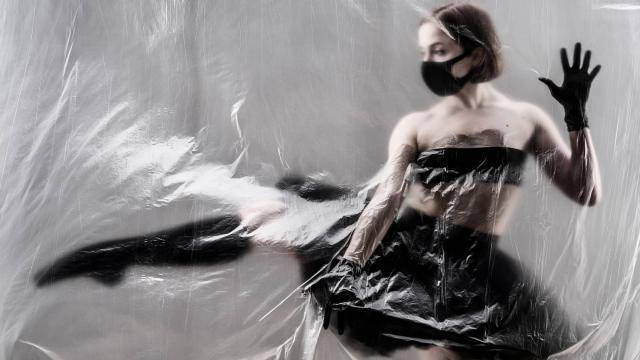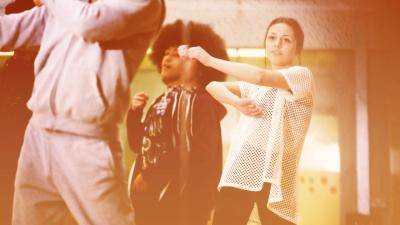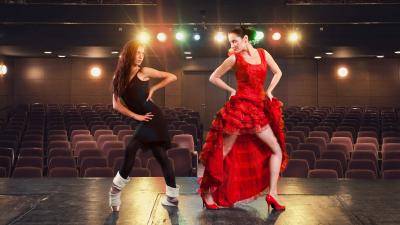As cities across the country begin to loosen their shelter-in-place orders, many dance studios are gearing up to follow suit. Already, studios like Playground LA and EDGE Performing Arts Center in Los Angeles, and Boise Ballet Academy and AfterHours Dance Studio in Costa Mesa, California have started allowing in-person instruction to take place, although some of the other larger studios, like Millennium Dance Complex in Los Angeles and Broadway Dance Center in New York City, have yet to announce plans for opening their studios back up. With the exciting news that many studios are beginning to reopen, though, there are a few factors regarding your physical and mental health that you should keep in mind once you start taking classes again. And while a good teacher won’t go too crazy in the first few weeks, it’s your responsibility to know how to take proper care of yourself.
Remember to start training for where you are now, not for where you think you should be
Start slow
Of course you’re ecstatic to actually be in a physical dance studio again instead of your too-tiny living room--we all are! But it’s important to remember that it’s been several months since you’ve consistently moved in a larger space, and shocking your body by going too hard, too fast could cause you to hurt yourself in your first class back. Remember to start training for where you are now, not for where you think you should be.
Think of your first few classes back as if you’re coming back from an injury. You wouldn’t go straight into grand jetés if you just tore your ACL, would you? Start slowly, and be gentle on yourself physically and mentally until you feel your strength is starting to come back. There’s also no shame in swapping out some of your favorite advanced level classes for a beginner or intermediate one until you’re sure you can handle the harder classes again. (Plus, it could help you recalibrate your technique!) In general, however many months you’ve been out of the dance studio is roughly how long it will take to be feeling 100% again.
It’s likely that your teachers will be adjusting classes for a while until they believe everyone has built back their strength. And while it might feel like they’re treating you like a beginner, you have to understand that you’re basically coming back from a really long layoff, so starting off slowly will be beneficial in the long run.
Keep in mind that you’re not the only one who might be feeling upset about having to rebuild your strength and technique
Prepare your body properly
A proper warm-up and cool down is essential to any workout. But now that we’re coming out of our shelter-in-place orders, it’s imperative that we’re conscious about how we’re warming up and cooling down our bodies after taking classes. Don’t just plop into the splits five minutes before class starts. According to Harvard Medical School, a good warm-up should last anywhere from five to 10 minutes and “should work all major muscle groups.”
Of course, certain muscles are going to need more love than others (especially considering that it’s been nearly impossible to actually jump in our homes). Make sure to give yourself enough time during your warm up and cool down to pay attention to any areas that have lost strength. That way, you know if you’ll need to make any adjustments or modifications to the combinations given to you in class.
If you know you won’t be headed to an in-person class anytime soon, but you want to target your weaker areas before you step into any dance studios, talking to a physical therapist or a personal trainer ahead of time can really help prepare you for a smoother transition back into dancing full out again. And although you probably already know how beneficial cross-training can be when coming back from an injury, it’s also paramount that you add some cross-training (like cycling, pilates, or even walking) into your routine before you make your studio comeback.
Preparing your body also means ensuring your diet can support your comeback. Sheltering-in-place might have affected what you’ve been eating, whether you’ve been ordering in more from your local restaurants or you’ve just been more lax on what kind of or how much food you’re eating (which is to be expected when we’re all living in the middle of a global pandemic).
Making sure you’re eating well before and after class can make a world of difference for your physical health. SELF noted that a good pre-workout snack or meal should be more carb-heavy with a little bit of protein (like oatmeal, a granola bar, dried fruits with mixed nuts, or rice cakes with almond butter) and should be consumed anywhere from 30 minutes to three hours before you workout. That way, you’re not still digesting in the middle of pliés.
Post-class, you should also be refueling with complex carbs (like quinoa, brown rice, or whole wheat bread) and protein (like beans, tofu, or fish). You also need to rehydrate after working out, not doing so can hinder your body’s recovery process and could leave you feeling more fatigued the next day.
Your worth is not based on how perfect your technique is after a months-long lockdown
Remember, you’re not alone
Regardless of how much you prepare to get back into regular dance classes, it’s going to take some time before you’re dancing at your best again--and your teachers should understand this. It’s important to give yourself a grace period of two to four weeks for your strength and stamina to improve, according to Exercise Right, and keep in mind that you’re not the only one who might be feeling upset about having to rebuild your strength and technique. If you are starting to feel frustrated, don’t try to push down that feeling. Writing about your frustrations in a journal or talking it through with a friend, coach, or therapist can do wonders for your mental health, and it can help you see the big picture.
Nothing is more important than your physical and mental health when it comes to going back to in-person dance classes. We’ve all been in the same boat for the past few months, and it’s going to be a frustrating few weeks, or even months, before we start to feel somewhat “normal” again. Remember that your worth is not based on how perfect your technique is after a months-long lockdown and that your teachers -- and the DancePlug team -- are rooting for you all the way!




